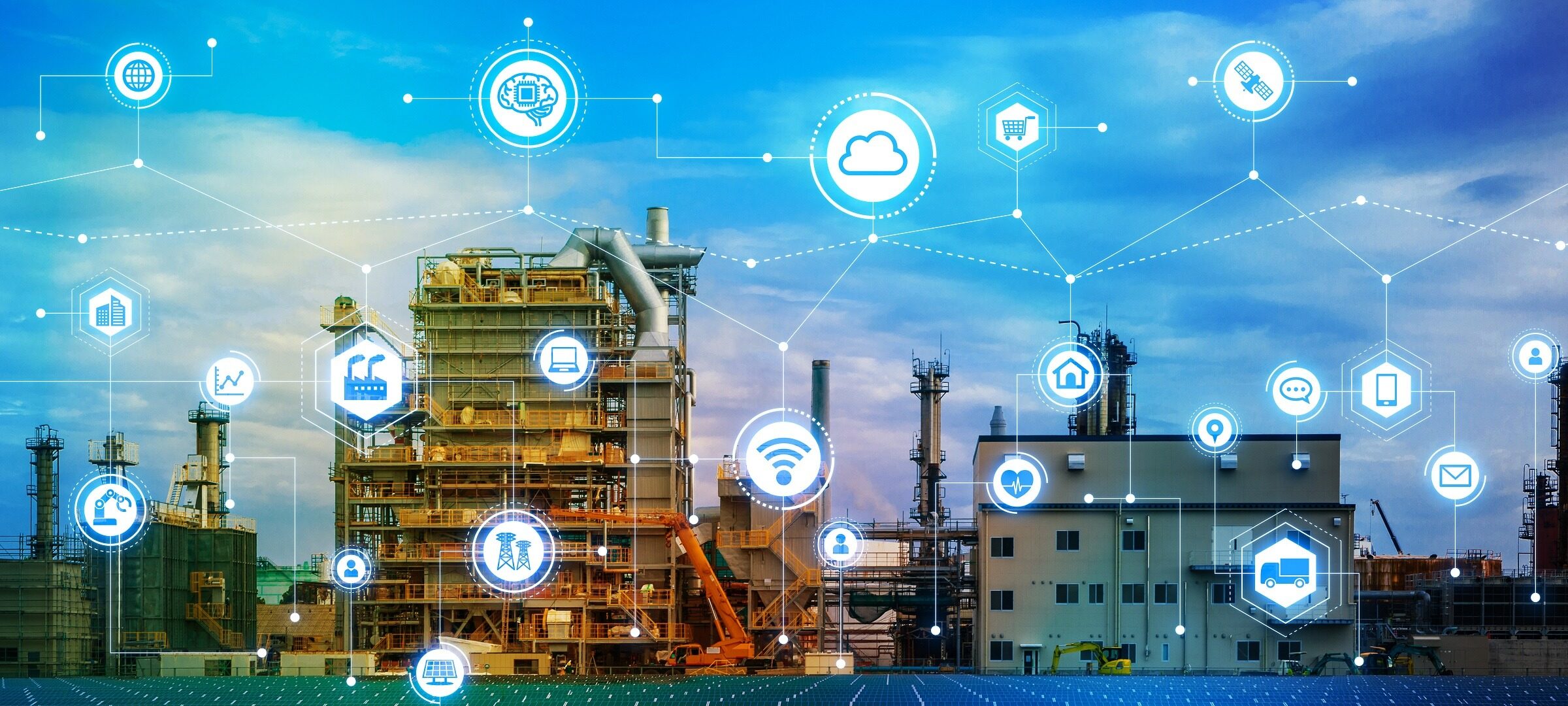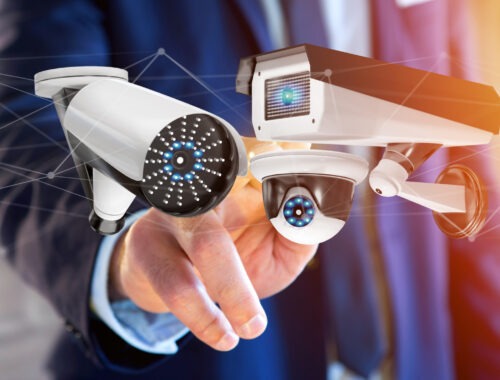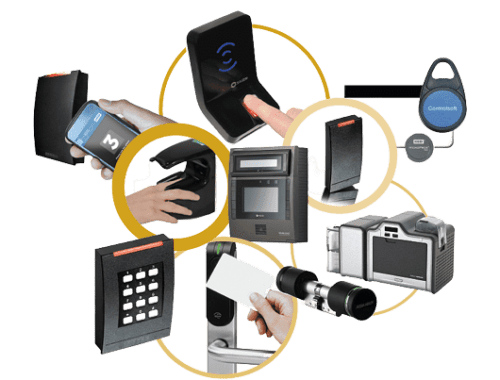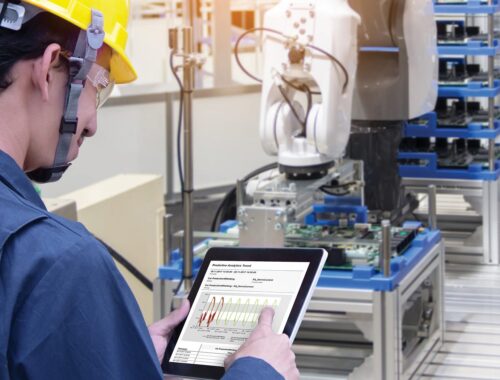
10 Jul IoT Solutions for Industrial Security and Safety
In today’s rapidly evolving industrial landscape, IoT solutions have become instrumental in enhancing security and safety within industrial facilities. With interconnected devices and sensors, IoT offers a wide array of innovative solutions designed specifically to monitor, control, and respond to security threats and safety hazards. Ensuring privacy and security inside industrial facilities is essential in the industrial world. With a wide range of solutions to respond to security risks and safety concerns, IoT has emerged as a good solution in this search.
In this comprehensive blog, we will explore various IoT solutions designed specifically for industrial security and safety. We will go into each option, going through its attributes, advantages, disadvantages, and other factors. You will have a thorough knowledge of how IoT may transform industrial safety as well as security standards by the time you finish reading this article.
Video Surveillance
Video surveillance is a cornerstone of industrial security. IoT-enabled cameras, coupled with advanced video analytics, offer a proactive approach to threat detection and safety management.
Features of Video Surveillance:
- Real-time monitoring of critical areas
- Video analytics for detecting unauthorized access and safety hazards
- Remote monitoring capabilities for multiple locations
Benefits of Video Surveillance:
- Enhanced situational awareness and rapid response to security threats
- Gathering of video evidence for investigations
- Centralized control and management of surveillance systems
Considerations for Video Surveillance:
- High bandwidth and storage requirements
- Addressing privacy concerns and regulatory compliance
- Need for skilled personnel for video monitoring and analysis

Environmental Monitoring
Industrial environments often face various environmental risks, from temperature fluctuations to hazardous gas leaks. IoT sensors provide real-time data on crucial parameters, allowing for early detection, proactive maintenance, and compliance monitoring.
Parameters Monitored in Environmental Monitoring:
- Temperature, humidity, and air quality
- Hazardous gas levels and leaks
- Particulate matter and noise levels
Benefits of Environmental Monitoring:
- Early detection of environmental risks and timely interventions
- Proactive maintenance to prevent equipment failures
- Compliance monitoring for safety regulations and standards
Considerations for Environmental Monitoring:
- Calibration and maintenance of sensors
- Effective integration with other systems for actionable insights
- Data management and analysis to handle large volumes of environmental data
Access Control
Controlling access to restricted areas is essential for maintaining security within industrial sites. IoT-based access control systems, integrating smart cards, biometrics, or mobile applications, provide enhanced security, real-time monitoring, and remote access management.
Types of Access Control Systems:
- Smart card-based access control
- Biometric-based access control
- Mobile application-based access control
Benefits of Access Control Systems:
- Enhanced security through advanced authentication methods
- Real-time monitoring of access logs and notifications
- Remote access management for flexibility and convenience
Considerations for Access Control:
- Reliance on network connectivity and backup systems in case of network failure
- Potential vulnerabilities in authentication mechanisms and data privacy concerns
- Integration with existing infrastructure and compatibility with other security systems

Asset Tracking
Efficient asset management is critical for operational efficiency and security. IoT-based asset tracking solutions leverage GPS, RFID, or BLE technology to monitor the location and movement of valuable assets within industrial facilities.
Technologies Used in Asset Tracking:
- GPS-based asset tracking
- RFID-based asset tracking
- BLE-based asset tracking
Benefits of Asset Tracking:
- Live visibility into asset location and movement
- Prevention of theft, loss, or misplacement of assets
- Improved resource utilization and operational efficiency
Considerations for Asset Tracking:
- Initial setup costs, including tracking devices and infrastructure
- Data privacy concerns related to tracking employee movements
- Integration with existing asset management systems and processes
Safety Wearables
In industrial settings, ensuring worker safety is of utmost importance. Smart wristbands, vests, and helmets that monitor vital signs, identify dangers, and send out instantaneous alerts are examples of IoT wearables.
Types of Safety Wearables:
- Smart helmets with sensors for head impact detection
- Safety vests with built-in sensors for detecting environmental hazards
- Wristbands with vital sign monitoring capabilities
Benefits of Safety Wearables:
- Monitoring of vital signs and early warning of health issues
- Detection of hazardous conditions for accident prevention
- Real-time alerts to workers and supervisors/emergency response teams
Considerations for Safety Wearables:
- Adoption Challenges and employee acceptance
- Data privacy concerns and the need for transparent policies
- Integration with existing safety protocols and training programs
Predictive Maintenance

Unplanned equipment failures can jeopardize safety and disrupt operations. IoT sensors enable predictive maintenance by collecting real-time data on equipment performance, vibrations, and temperature.
Components of Predictive Maintenance:
- Real-time data collection from sensors
- Data analytics and machine learning algorithms
- Predictive maintenance alerts and notifications
Benefits of Predictive Maintenance:
- Reduced downtime and improved safety through proactive maintenance
- Scheduling maintenance and allocating resources properly and effectively
- Saving money by using resources efficiently
Considerations for Predictive Maintenance:
- Initial setup costs and data analysis complexity
- Integration with existing maintenance systems and processes
- Addressing false positives or negatives in predictive maintenance alerts

Emergency Response Systems
Timely and efficient response to emergencies is crucial for industrial safety. IoT-based emergency response systems, equipped with panic buttons, alarms, and real-time notifications, expedite the response process.
Components of Emergency Response Systems:
- Panic buttons for immediate alerts
- Alarms and sirens for audio notifications
- Real-time notifications to designated personnel or emergency response teams
Benefits of Emergency Response Systems:
- Rapid response and mitigation of emergency situations
- Improved coordination among responders and stakeholders
- Enhanced worker safety and minimized risks
Considerations for Emergency Response Systems:
- Reliance on network connectivity and backup systems
- Potential false alarms and the need for proper training and testing
- Integration with existing safety protocols and emergency response plans
Integrated Command and Control Centers
Centralized monitoring and control of security and safety devices streamline operations and enhance response capabilities. IoT platforms and dashboards provide comprehensive overviews and enable efficient decision-making.
Features of Integrated Command and Control Centers:
- Centralized monitoring of security and safety devices
- Real-time data visualization and analytics
- Efficient coordination and communication among stakeholders
Benefits of Integrated Command and Control Centers:
- Comprehensive overview of the industrial environment
- Streamlined decision-making and rapid response to incidents
- Integration with various IoT devices and systems for seamless management
Considerations for Integrated Command and Control Centers:
- Complex integration of diverse devices and systems
- Potential cybersecurity risks in centralized systems
- Training and expertise required for operators and administrators

Cybersecurity
Protecting IoT systems from cyber threats is of utmost importance. Robust cybersecurity measures, including secure communication protocols, encryption, authentication mechanisms, and ongoing monitoring, are necessary to safeguard industrial IoT deployments.
Components of Industrial IoT Cybersecurity:
- Secure communication protocols (e.g., SSL/TLS)
- Encrypting the data in transit and at rest
- Strong authentication mechanisms (e.g., multi-factor authentication)
- Regular monitoring and updates for vulnerabilities
Benefits of Cybersecurity Measures:
- Protection against cyber threats and data breaches
- Ensuring data integrity and confidentiality
- Prevention of unauthorized access to IoT devices and networks
Considerations for Industrial IoT Cybersecurity:
- Constant monitoring and updates for evolving security risks
- Potential vulnerabilities in IoT devices and network infrastructure
- Need for skilled cybersecurity personnel and ongoing training

Conclusion
IoT solutions have the potential to greatly enhance industrial security and safety. By leveraging interconnected devices, organizations can achieve unprecedented levels of security, safety, and operational excellence. Video surveillance, environmental monitoring, access control, asset tracking, safety wearables, predictive maintenance, emergency response systems, integrated command, and control centers, and robust cybersecurity measures all contribute to a safer industrial environment. Embracing these IoT solutions allows organizations to protect their most valuable assets—their workers and infrastructure.